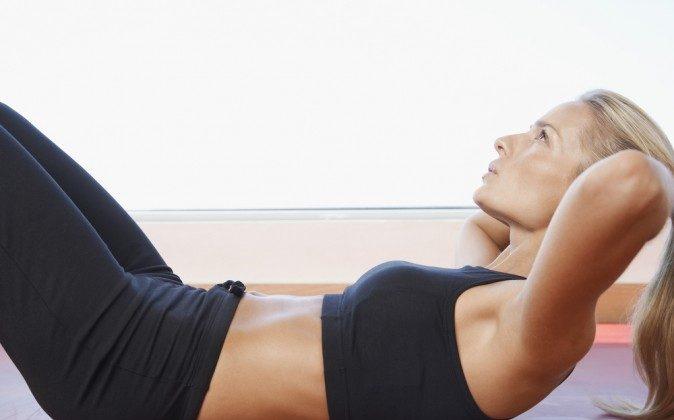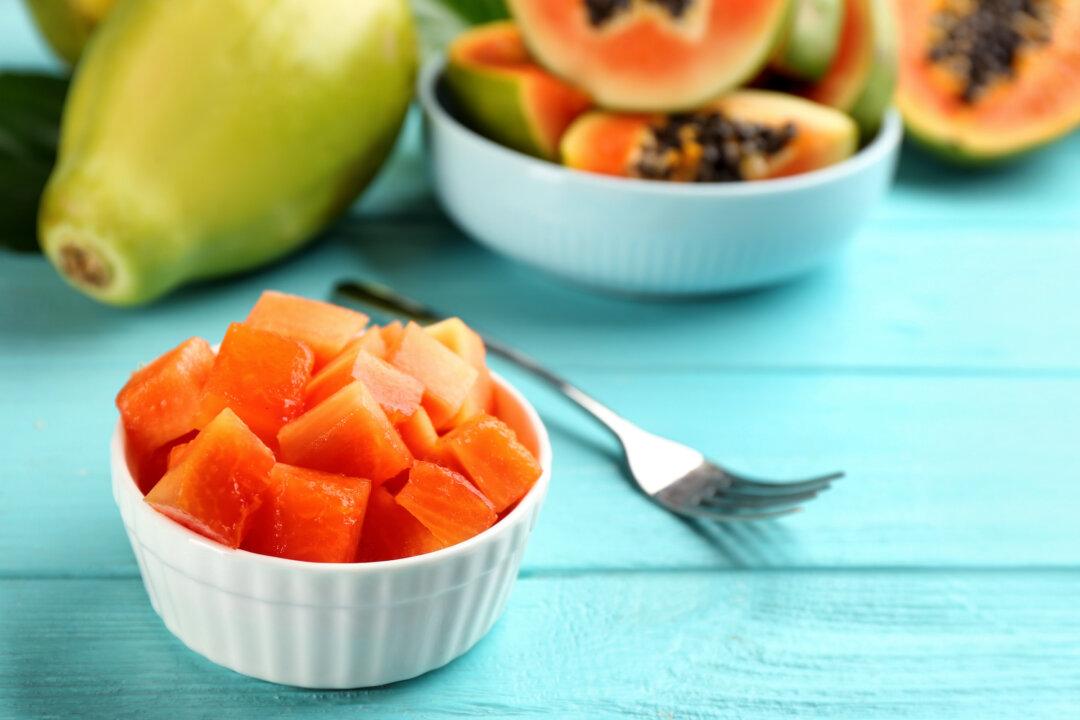Your abdominals are part of your body’s 29 core muscles, which are located mostly in your back, abdomen, and pelvis.
This group of muscles provides the foundation for movement throughout your entire body, and strengthening them can help protect and support your back, make your spine and body less prone to injury, and help you gain greater balance and stability.
When you build your ab muscles, it’s like developing an internal corset that holds your gut in. By doing so, you help stabilize your spine, vertebrae, and discs, which in turn can significantly reduce back pain and make it easier for you to lift heavy items, twist and turn, and perform the movements required for a full life.
Having a strong abdominal wall is very important for optimal body movement and gets increasingly more important with advancing age.
A strong abdominal wall is also what will produce that six-pack look that many are after (once you’ve lost sufficient amounts of subcutaneous fat), but there’s still a lot of confusion about which exercises are really best for your abs.
Crunches Top the List of 15 Popular Abdominal Exercises
The American Council on Exercise (ACE) recently decided to find out which exercises are best for activating your abdominal muscles. They pitted trendy exercise machines and other devices against popular standbys, including the bicycle crunch and stability ball crunch. In all, 15 exercises were analyzed and compared against the traditional crunch:
To gauge the effectiveness of the exercises, study participants completed a series of workouts in which electrodes were attached to their abdominal muscles, obliques, and rectus femoris (thigh muscle).
The electrodes measured muscle contraction during each exercise… and showed that the traditional crunch had the greatest muscle activation of all the exercises. According to one of the study’s authors, Edward Stenger, M.S. of the University of Wisconsin, LaCrosse:
“We spent a considerable amount of money on abdominal exercise equipment to basically show that you can effectively train the abs at home for free…
Obviously, laying on the ground doing the traditional crunch is not appropriate for everybody, especially people with low-back pain, but for the average person who wants to work his or her abdominal muscles to get stronger, have less back pain, and get better health benefits…
All you need to do is get a comfortable spot on the floor, lay down and do some crunches. It doesn’t cost anything to work out. Everything else is kind of a waste of money from this standpoint.”
Form Matters: Doing Crunches Incorrectly May Be Wasting Your Time
It’s important to note that other research has found quite the opposite of the ACE study in regard to the effectiveness of crunches. One study actually found the traditional abdominal floor crunch produced and recruited the least amount of muscle activity when subjects were attached to an electromyography (EMG) machine.
In fact, even previous studies done by the researchers of the new featured study showed that crunches may not be the best form of abdominal exercise. Why the discrepancies?
It’s probably all about form. In the ACE study, the researchers paid careful attention to the participants’ form to be sure they were doing the crunches correctly, and that’s likely why they showed so much benefit. According to study author John Procari, Ph.D.:
“When you look across the different exercises, none were greater than the traditional crunch. This is interesting because other studies (including other studies we’ve done), showed a difference…
I think a part of it is, when we looked at the EMG for the traditional crunch, we had people do the traditional crunch very deliberately and correctly, and I think we had fairly high activation from the abs because of that.”
So how do you do a crunch properly?
- Lie on your back with your feet against a wall (so your knees and hips are bent at a 90-degree angle)
- Tighten your abdominal muscles and raise your head and shoulders off the floor
- Try crossing your arms on your chest instead of behind your head (to avoid straining your neck)
- Hold for about three deep breaths, lower to the ground, and repeat
In the video below, Darin Steen demonstrates a slightly more advanced form of crunch using an exercise ball.
Why a Varied Abs Routine Works Best
Even though crunches appear to be an incredibly effective and simple way to strengthen and tone your abs, they shouldn’t be your only abdominal exercise. As noted by Dr. Cedric X. Bryant, ACE’s Chief Science Officer:2
“It’s important, however, to keep in mind that there is no single abdominal exercise that challenges all the abdominal muscles in the most effective way, and the best way to work the abs is with different types of exercises. For example, the plank exercise effectively engages the transverse abdominis, which plays an important role in spinal stabilization.”
Core exercises, specifically abdominal exercises, must be done in a variety of ranges of motion, in different angles and positions, in order to engage all muscles. It is also important to understand that what works for one person or body type may not work for another. So the key is to find the variety that works for you, is challenging for you, and produces visible results. This may include:
- Traditional exercises, such as a standard crunch with rotation or a standing rotation with a light hand weight.
- Functional exercises, including work on a stability ball.
- Stabilizing exercises, such as lying on the floor, pulling your belly back toward your spine, and holding that position while breathing deeply.
- Extension exercises, such as lying on your stomach with arms extended above your head. Then raising both arms and both legs, at the same time, off the floor. (Hold for a count of five, or five breaths, and slowly return to the floor.)
Even push-ups can be a phenomenal exercisefor working your abs. If you want to target your abs, in particular, while doing a push-up, try:
- While in plank position, pull in your bellybutton. Your bellybutton is attached to your transverse abdominis, that inner sheath that holds your gut inside and gives your spine and vertebrae a nice, weight belt-tightening type of support. So by pulling it in, you begin to contract that deep inner transverse abdominis muscle.
- Next, do a Kegel squeeze. More women than men might be familiar with this term. A Kegel squeeze is performed by drawing your lower pelvic muscles up and holding them up high and tight. For men who aren’t familiar with that term, it’s similar to trying to stop urinating in the middle of the flow. This squeeze will allow you to feel and focus on your abdominal muscles.
- Try a push-up dumbbell row. Start at a dumbbell weight suitable to your current level of strength and fitness and progress into higher weights as you go along. Place the dumbbells at a 45-degree angle, pull in your bellybutton, draw up your lower pelvic muscles (Kegel squeeze), and breathe in as you lower your upper body to the floor. Breathe out on the way up, and once your arms are in the fully extended position, perform a row — pulling the right dumbbell up toward your chest.
On the next push-up, pull up with your left. This advanced technique will work your abs from side to side, and target those deep core muscles as well.
Crunches Alone Won’t Give You Six-Pack Abs
Crunches are an example of a phenomenal type of exercise. They’re simple to do, cost nothing, and can be done virtually anywhere (and even if you only have a few minutes to exercise). That being said, it would be misleading to suggest that doing crunches is going to lead to six-pack abs in and of themselves.
In one study, when 24 adults did seven abdominal exercises, five days a week for six weeks, they did not lose any belly fat, or fat anywhere on their bodies, for that matter.3 And until you lose your belly fat, you won’t be able to see the toned muscles underneath. Abdominal exercises alone won’t do this because about 80 percent of your ability to reduce excess body fat is determined by what you eat, with the other 20 percent related to fat-burning exercise and other healthy lifestyle habits.
If your diet is based on sugar/fructose and processed junk food, your chances of getting rid of your belly in favor of flat, ripped abs are quite slim -- even if you work out religiously. You simply will not see defined abs unless you reduce your overall body fat, and a poor diet will cause your body to hold on to excess fat, despite all your exercise efforts. Two of the most important dietary factors are:
- Reducing or eliminating sugar from your diet. This includes ALL forms of sugar and fructose, whether refined or “all-natural” such as agave or honey, as well as all grains (including organic ones), as they quickly break down to sugar in your body
- Increasing healthful fats in your diet, such as coconut oil and animal-based omega-3s
By avoiding processed foods in general, and focusing instead on whole, preferably locally grown organic foods, cooked at home, you can circumvent many of the greatest dietary obstacles. The good news is once you make the change, the cravings for the foods you have removed will fade away. This is especially true with intermittent fasting, which is one of the most profoundly effective ways to lose body fat, especially when combined with high-intensity interval exercises like Peak Fitness. For more details on what to eat to optimize your body fat levels, I suggest you review my Nutrition Plan, which is a comprehensive and step-by-step guide to help you make health-promoting, fat-busting food and lifestyle choices.
*Image of “sit-up“ via Shutterstock






